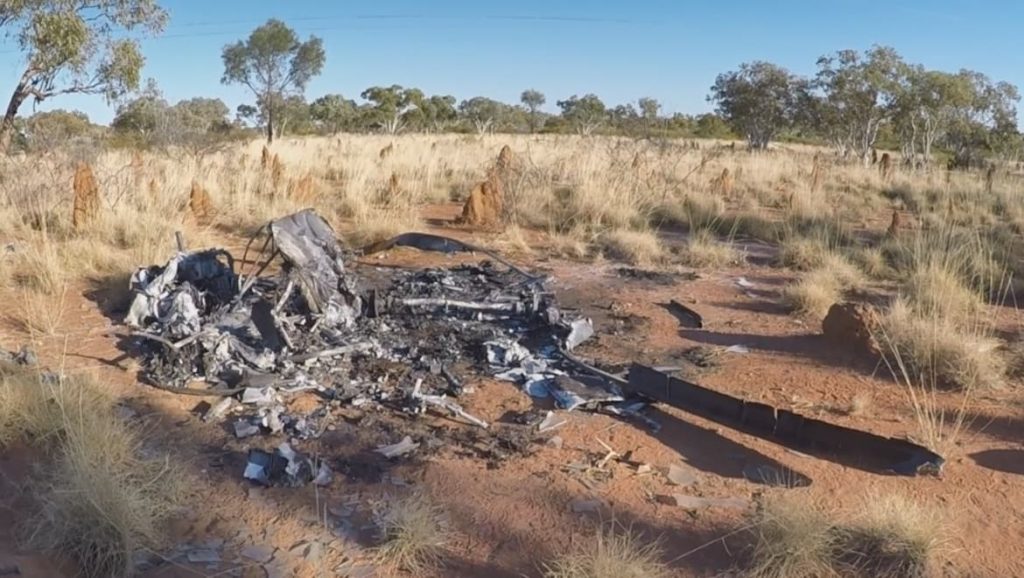
The ATSB has criticised a Queensland firm for its overhaul of an R22 Beta II that subsequently crashed and killed its pilot.
An investigation ruled that Cloncurry Air Maintenance “had not recorded and tracked all maintenance activities” during the earlier 2,200-hour overhaul of the helicopter and had adopted work practices that “increased the risk of memory-related errors and omission”.
It also blamed a high workload for reducing the chief engineer’s “capacity to oversight maintenance activities”.
Brent Acton died in August 2017 when his helicopter crashed shortly after take-off, seven kilometres north-north-west of Cloncurry Airport. The ATSB believes a key bolt separated because a self-locking nut was missing. Crucially, the trip was the first commercial flight since the maintenance work was carried out.
ATSB director transport safety Dr Stuart Godley said, “Different scenarios were examined for the cause of the bolt separation; however, as it was not possible for the helicopter to operate for any length of time without a nut attached to the bolt, it was likely that the nut was not reinstalled or inadequately torqued during the helicopter’s recent 2,200-hour overhaul.”
On the morning of 2 August 2017, the pilot of a Robinson R22 Beta II helicopter, registered VH HGU and operated by Cloncurry Mustering Company, departed Cloncurry Airport, Queensland, on a ferry flight in preparation for an aerial mustering operation.
About three minutes after take-off, Acton experienced a loss of control and the helicopter broke-up in-flight. The R22 then hit the ground.
The ATSB found the maintenance organisation “adopted a number of work practices that increased the risk of memory-related errors and omissions, including using abbreviated inspection checklists, not recording all flight control disturbances, and not progressively certifying for every inspection item as the work was completed”.
“This investigation highlights the limitations of verbal communication as a method of explaining and understanding problems and their unreliability as a means for capturing essential tasks over an extended time period,” Dr Godley said.
“Maintenance organisations are urged to consider the human factors elements associated with their practices, capture them in their documented quality control procedures, and ensure they are complied with.”
The investigation noted that in the weeks prior to the accident the maintenance company was experiencing a period of very high workload that likely exceeded the workforce’s capability and reduced the chief engineer’s capacity to oversight maintenance activities.
In addition, in the years leading up to the accident, staff changes reduced the maintenance provider’s levels of qualifications and experience.
The investigation also found the maintenance organisation had limited internal independent oversight and increased reliance on audits for the evaluation of its quality performance.
“Audits are essential for independently verifying the effectiveness of an organisation’s processes and procedures. This accident reinforces the importance of auditors inspecting the evidence collected during an audit to ascertain whether the requirements are being met, specifically conformance with the relevant standards,” Dr Godley said.
“Audits may also be used to identify potential underlying human factors issues, which may be raised as an observation or opportunity for improvement to inform the auditee of best industry practices.”
The ATSB said Cloncurry Air Maintenance has since improved its practices, which has included progressive certification for tasks, adopting the helicopter manufacturer’s checklists for their inspections, removing all untracked MS-series self-locking nuts from stores, and completing inspections of the flight controls on all the Cloncurry Mustering Company helicopters with nil defects reported.
In March 2019, the ATSB issued a safety advisory notice advising all maintenance staff working on Robinson helicopters to ensure that before re-using a self-locking nut, the correct part number is fitted, and that the D210-series corrosion-resistant nuts are used for reassembly of critical fasteners in accordance with the Robinson Helicopter Company instructions for continued airworthiness.
Australian Aviation has approached Cloncurry Air Maintenance for comment.
Cloncurry mayor Greg Campbell paid tribute to Acton shortly after his death.
“I am sure I can speak for the Cloncurry community, grazing and aviation industries when I say Brent is going to be greatly missed,” he said. “His family will be supported in whatever ways are needed.”















